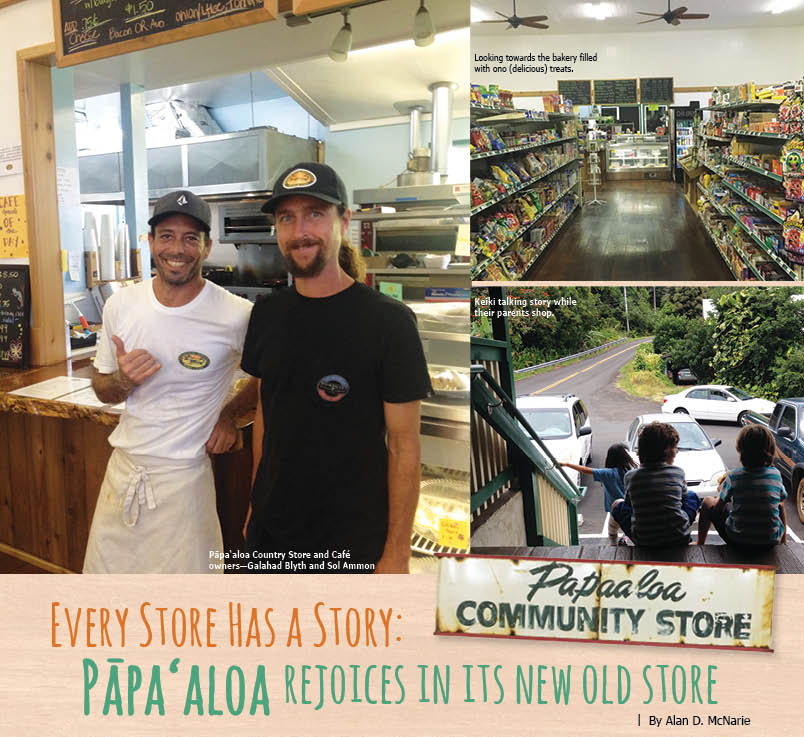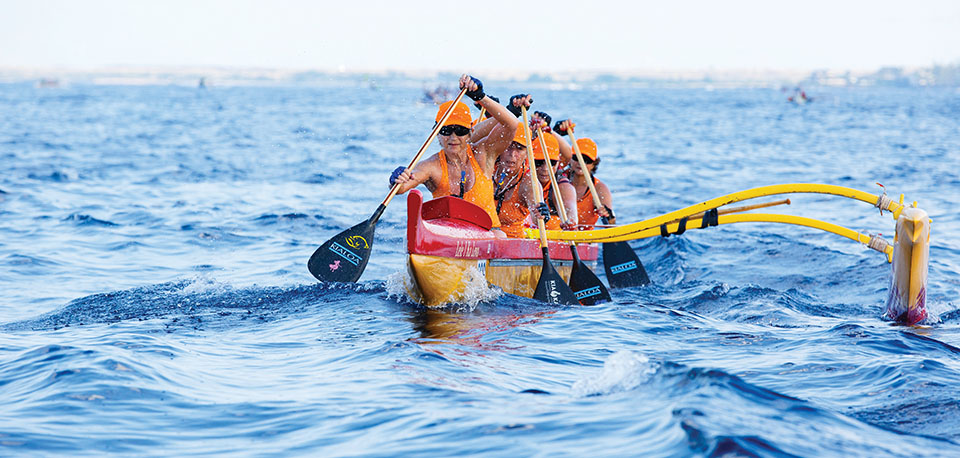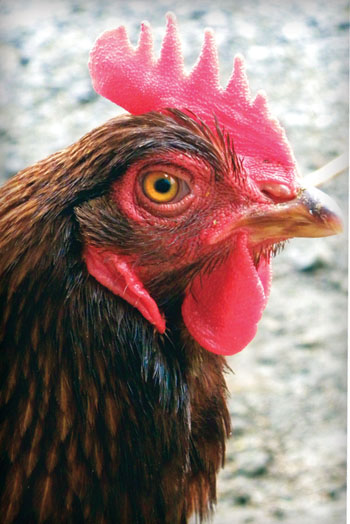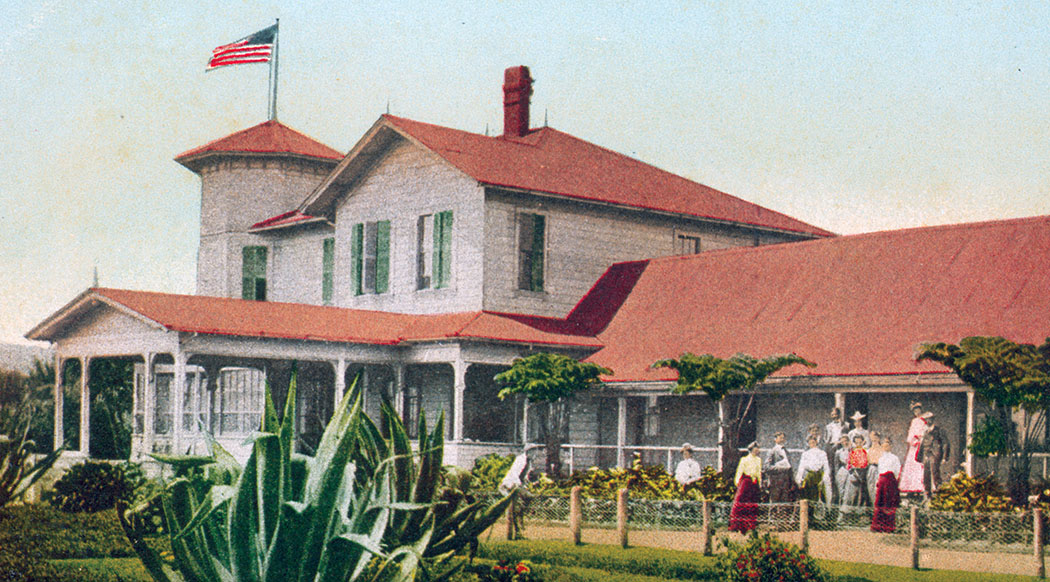
Then & Now: Volcano House Reincarnate–Uncovering Old Beauty and Discovering Hawai‘i’s Oldest Hotel Anew

By Alan D. McNarie
The grand dame of Hawai‘i hotels is back! Volcano House began checking in visitors March 22 for the first time since it closed for structural upgrades and interior renovations on December 31, 2009. On June 1 the lobby, dining room, gift shop, and bar also reopened for business.
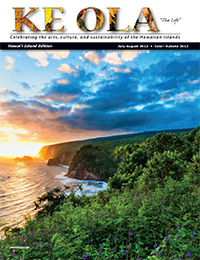
Visitors familiar with the island’s oldest hotel will find completely new décor. Gone is the dark wood paneling, dark brown overstuffed leather sofas, and most of koa rocking chairs that gave the hotel’s great room its former gentleman’s club feel. The walls are a much lighter color now, and the lounge is furnished with modern wicker-rattan, as is common in most hotels in Hawai‘i. Vintage photographs displaying a pictorial history of the hotel that used to hang on the walls of the bar and hallways are gone. The great room is now decorated with copies of Volcano School art, the current lānai area once hidden by a former souvenir shop is adorned with the artwork of Dietrich Varez, the front desk sits across from paintings of Hawaiian Ali‘i by Kamehameha descendant Kapanikuniahi Parker, and the restaurant walls are adorned with replicas of vintage Hawaiian magazine cover art.
Guests no longer dine from a buffet line. Instead, meals are offered à la carte, and tour bus passengers now lunch on bento boxes featuring poi, poke, salad, and a choice of kalua pig, fish, chicken, or a vegetarian entree.
The new menu, wherever possible, features “farm to table, Hawai‘i Island-sourced food,” says Elizabeth Churchill of Aqua Hospitality, the Honolulu-based company that the new concessionaire, Ortega Family Enterprises hired to run the hotel. “Ortega holds concessions in several national parks,” says Elizabeth, and “wanted a locally based operator who understands the Hawai‘i Market and is pono to handle the hotel’s management.”
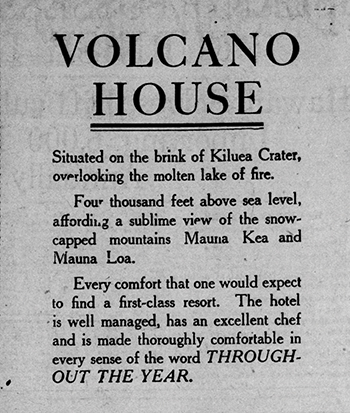
Ad in “The San Francisco Call,” August 14, 1912. public domain photo on wikipedia.com
When the hotel holds its grand opening celebration in September, she promises proper native Hawaiian protocols will be observed.
The changes are definite improvements. The little art gallery/gift shop that used to sit behind oversized sliding doors used as walls between the lounge and the crater has been moved to the mauka side of the building. In its place is now a “meditation room” with huge windows highlighting the real reason that people come to stay at Volcano House: the incredible panoramic vista of the Kīlauea Caldera with Halema‘uma‘u steaming away in the distance. In Volcano House’s previous incarnation, visitors had to walk through the bar and out the door on the far side to get to that vista. Now it’s front and center.
That same panorama, viewed through huge picture windows, dominates the spacious dining room and all the guest rooms on that side of the building, as well. (The less expensive rooms on the mauka side offer rain forest views.)
What remains are familiar staples. The famous koa wood bar counter has been carefully restored. The two big basalt fireplaces with their bas-reliefs, one of Madame Pele in bronze and the other of Lohi‘au and Hi‘iaka in wood are still there.
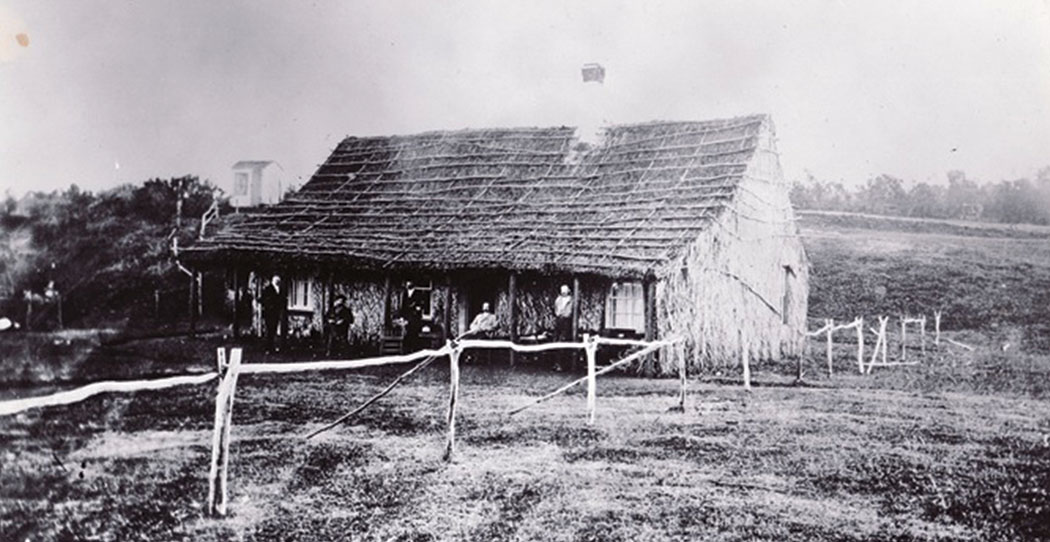
Some of what may appear new is actually so old that most people alive won’t remember it. What’s happened in the past three years has not just been a renovation, it’s been a restoration. The national park and the new concessionaire spent an estimated $6.5-7 million, between them, to recapture the look and feel of the 1940s hotel when it first opened on November 8, 1941.
When the restoration team took up the patterned carpet, for instance, they found polished concrete. Polished concrete was something of an art form in the first half of the 20th Century. When used in showcase buildings such as Hilo’s Palace Theater, those who created them were often considered fine craftsmen. Today, some of that gleaming dark green concrete is once again visible underfoot in the hotel lobby and elsewhere.
Likewise, three “special rooms” upstairs feature the original hardwood flooring, rediscovered during the refurbishing, along with another surprise—elegant green tile fireplaces, which sat behind the rooms’ walls for decades until the restoration was underway.

This isn’t the first reincarnation the hotel has been through. Volcano House is claimed to have been in continuous operation from 1846-2010, though not in the same building. In fact, it started life as a Hawaiian thatched house on the north side of Kīlauea crater built by Benjamin Pitman, Sr. Later, in 1877, a Mr. Jones decided to build a rustic six-room, single-story wooden lodge. It was replaced in turn by a series of wooden structures and additions, culminating in the current building, built in 1941 and expanded in 1953.
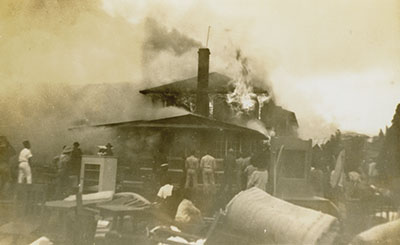
Note the direction of smoke is almost due south. Hawai‘i Volcanoes National Park Photograph Collection
Few people know more about the hotel’s early days than does Volcano architect and photographer Boone Morrison. In the early 1970s, Boone found the decaying 1877 lodge in the woods near the current hotel. As practice for the park’s fire brigade, the building was slated to be burned, and Boone proposed instead that it be turned into an art gallery. Boone himself led the nine man crew that used period tools to restore the old building in what he describes as “the best construction job I’ve ever had.”
“I discovered the source of the coffee break,” he reminisces, “because midmorning and midafternoon, we had to stop and sharpen tools.”
In 1974, the 1877 Volcano House building was placed on the National Register of Historic Properites and has served as the Volcano Art Center. The hotel’s logs, which date back as early as 1865 were originally meant to record changes in the eruption, include a plethora of comments by guests about the hotel and staff, as well. One praised the ‘neat little hotel’ with its ‘fine neat fireplace.’ Veteran visitors who’d been there before also made comparisons with earlier accommodations, which one called an “open shed with a hole in the roof for a fireplace.”
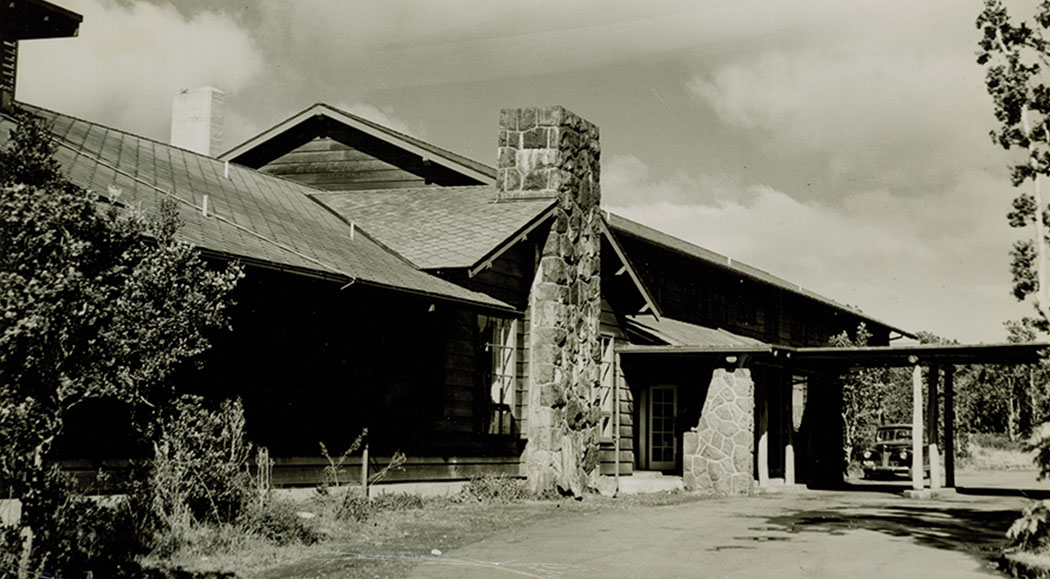
Past Renovations
In 1891 a “Victorian-inspired” two-story addition was built. Then, in 1921, the original 76 feet of the 1877 building was cut away and moved on rollers to its current location. Recent work on the documentation of this historic building in 2010 by Dr. William Chapman notes that the current 1877 building is 25 feet shorter than indicated by contemporary descriptions of the building. It is possible that part of the old building’s dining room and the manager’s quarters were overlapped by the new building and left in place.
Meanwhile, the 1891 addition was expanded upon, until it eventually was a sprawling 115-room complex.
A 1904 picture shows a much different Volcano House from the one today: a white, Victorian-looking frame structure with ornate shutters and a cupola. An interior shot showed a hotel lobby that resembled a Victorian drawing room, complete with a billiard table.
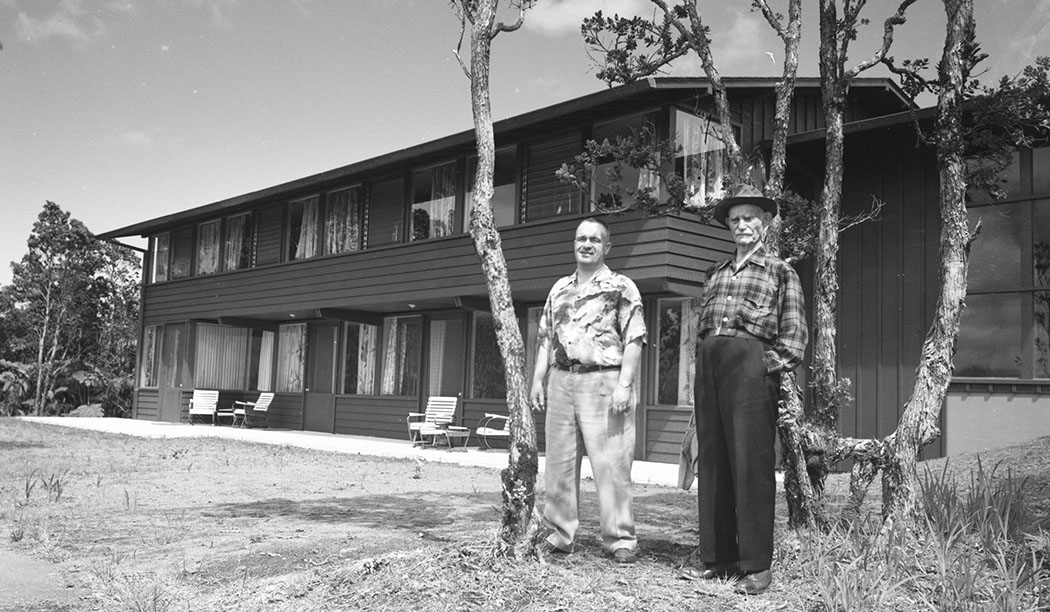
This was the building that first attracted the attention of the hotel’s most famous owner: George Lycurgus, a Greek immigrant and California fruit dealer. According to tradition, he first came to Hawai‘i by accident when he boarded a ship in California for a friendly card game with members of the Spreckels family, who owned the Oceanic Steamship Company, and didn’t notice when the ship left harbor.
George eventually settled in the islands, leased land and buildings of the former “Seaside Club” in Waikīkī; renovated the buildings and renamed it the Sans Souci Hotel. He bought Lorin Thurston’s shares in the Volcano House in 1904, where “Uncle George” became renowned for his jovial hospitality. After the overthrow of the monarchy, George remained fiercely loyal to Queen Lili‘uokalani and was briefly imprisoned by the Republican government. He was also said to have started, or at least to have encouraged, the tradition of offerings to Madame Pele at Halema‘uma‘u.

As George encouraged Hawaiian traditions, he also encouraged science, helping Thomas Jaggar to found Volcano Observatory. In fact, the observatory’s first room, still containing some of Thomas’ original equipment capable of detecting earthquakes, sits under a mound on the caldera side of Volcano House. The Whitney Laboratory of Seismology is on the National Register of Historic Places.
George probably had some interesting political discussions with Thomas, who supported annexation.
Then, Feb 21, 1940 turned into no doubt one of the worst days of Uncle George’s life.
“An oil burner in the kitchen overflows and catches fire,” recounts Boone. “And the building goes up in an hour.”
Remarkably, no one was killed. And George, already a senior citizen, wasn’t about to give up. He pressed the 1877 structure temporarily back into service, kindling the fire in the hearth with embers from the burnt hotel. He commissioned Hawai‘i architect Charles Dickey to design a new, smaller hotel in the so-called “National Park Rustic” style, at a site closer to the caldera rim. Within a year, the new Volcano House was up and running again. That building received another addition in 1953 to create a 33-room hotel.
Finally, in 1960 at the age of 101, George passed away. The new management named the hotel bar “Uncle George’s Bar” in his honor.
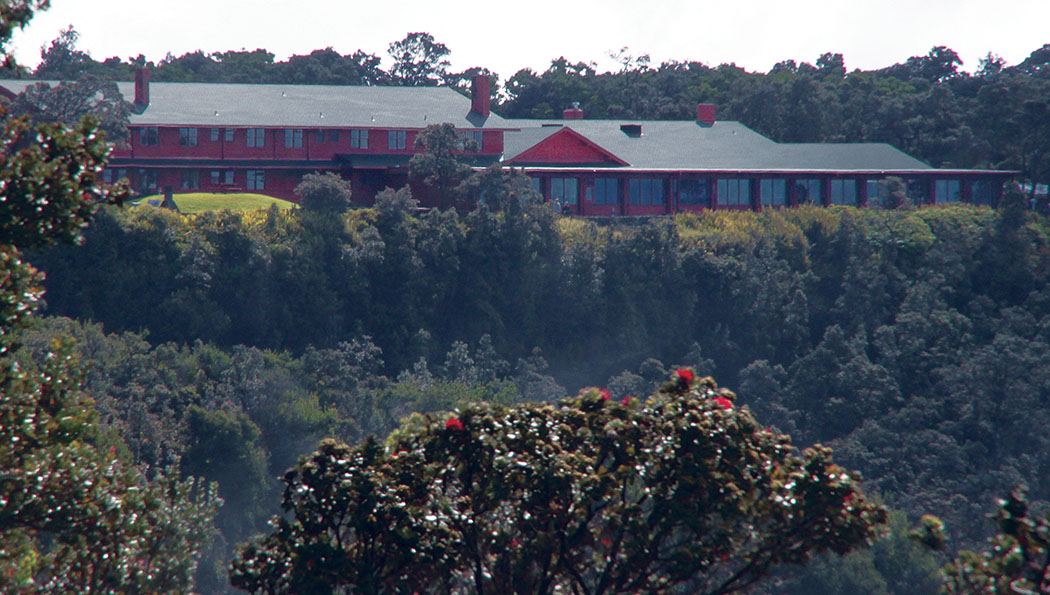
Current and Future Renovations
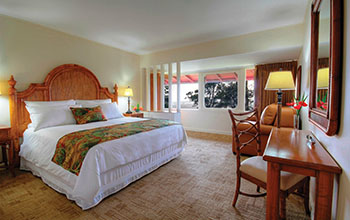
According to Laura C. Schuster, architect Bruce Harden “tried really hard to complement the existing 1941 building,” mimicking some of its design elements found in the 1941 hotel. Although the annex rooms are laid out differently—they’re actually a little larger—they still have much the same feel, including those big windows to take in that magnificent view.
All the rooms now have Wi-Fi, as well as thick white complimentary bathrobes and black golf umbrellas to accommodate Volcano’s weather. One modern convenience absent from the hotel is that none of the rooms have televisions.
After all, who comes to Volcano House to watch TV? The real show is right through those big picture windows. ❖
For info: HawaiiVolcanoHouse.com, PacificIslandParks.com
Contact writer Alan McNarie: amcnarie@yahoo.com
